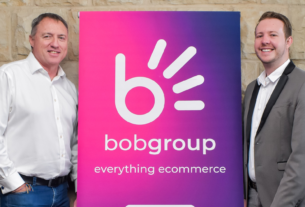The past few years have seen a growth in the adoption of digital customer engagement channels by organisations, as digital engagement provides them with valuable data on customer behaviour, which enables them to optimise their marketing strategies and product development. The outbreak of COVID-19 saw the internet rapidly becoming the shopping channel of choice for an increasing number of consumers, and this trend is likely to persist. However, e-commerce businesses do face a major challenge in that winning and retaining customers is an expensive exercise.
Therefore, to secure success, such as driving business profitability, it is necessary to invest primarily in those customers who will be lucrative for the company in the long run. It is thus important for an organisation to understand these customers intimately and to engage them with the right channels, while also tailoring offers to their specific needs and desired outcomes.
This can be successfully achieved by adopting a digital transformation strategy and delivering a personalised customer experience, while drawing on customer-related metrics, of which Client Lifetime Value (CLV) is a core steering metric. CLV offers both established and new players in the e-commerce space the opportunity to better understand, target and serve their customers in an effective and efficient manner to create more value for them, thereby creating a competitive advantage in the marketplace.
Prohibitive costs
However, this only makes sense when a company is operating an integrated and advanced automated marketing customer service and engagement platform. Otherwise, the organisation’s individual marketing efforts would be prohibitively expensive and the cost of acquiring and retaining new customers would simply skyrocket.
Thus, adopting a single integrated platform approach becomes the launchpad to boosting an organisation’s CLV – helping the business to make relationships stronger, longer lasting, and altogether more profitable over time, despite the turbulent economic climate.
Once a business understands the importance of CLV and its links to business profitability, it should focus on the key priorities that are integral to enabling and sustaining profitable customer interactions over time.
The first of these priorities would be customer engagement. When engaging with customers is a top priority for a company, with a defined CX strategy and framework in place, the result will show the ability of an organisation to deliver a positive personalised Customer Experience (CX). As such, a key investment in the customer journey is required when creating a CX. Improving CX should be a business-wide endeavour that can be addressed using a CX programme. This is a process of monitoring, listening and making changes that add up to a lasting improvement in how customers feel and their tendency to be loyal, and more importantly, become a virtual brand “ambassador” over time.
Omnichannel engagement
The second priority is omnichannel engagement, which is a means of enabling communications over the channel of choice and the ability to switch between channels. With omnichannel engagement throughout the customer journey and across the customer’s preferred communications channels, organisations can deliver integration across all these digital touchpoints to create the omnipresent perception for the end customer.
Lastly, organisations should focus on revenue growth, which specifically refers to customer data and the analysis of this data, obtained from all customer interactions. Leveraging this data allows enterprises to employ smart solutions, such as Artificial Intelligence-driven chatbots to analyse and upsell and cross sell, which drives revenue growth.
Essentially, using CLV to manage an ecommerce business requires a long-term strategy and a systematic approach, which can be achieved through the collection of data, determining the true value of customers using this data and then making targeted investments. A customer data platform is therefore becoming a must for forward-thinking enterprises, as it unifies the organisation’s customer data from marketing and other channels to enable customer modelling to optimise the timing and targeting of messages.
Up until now, organisations have been spending too much on delivering substandard CX, with customer engagement that is fragmented and data that resides in silos. The time is right for companies to adopt a platform that brings all this data together, enabling meaningful communication, at the right time and across the right channels.





